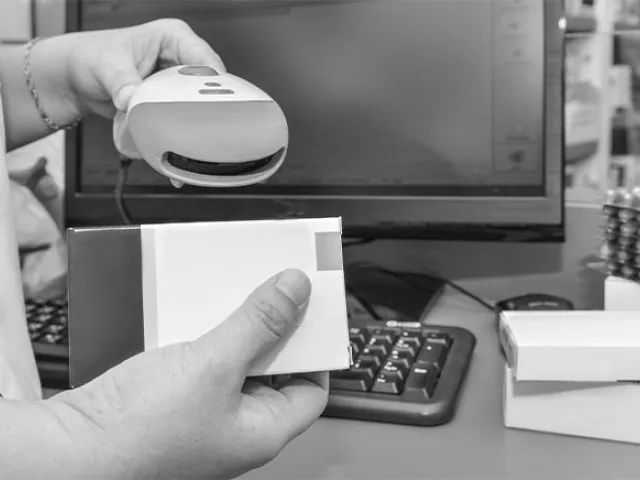Table of contents
 The final phase of the U.S. Drug Supply Chain Security Act (DSCSA) requires the 100% electronic and interoperable exchange of unit-level product traceability data between pharmaceutical supply chain stakeholders—and the November 27, 2023 compliance deadline is fast approaching. Establishing point-to-point integrations with each of your trading partners to exchange this data would be time consuming, difficult to manage and maintain, and prohibitively expensive. The good news is that the proven TraceLink network makes integrating with all partners fast, simple, and cost effective.
The final phase of the U.S. Drug Supply Chain Security Act (DSCSA) requires the 100% electronic and interoperable exchange of unit-level product traceability data between pharmaceutical supply chain stakeholders—and the November 27, 2023 compliance deadline is fast approaching. Establishing point-to-point integrations with each of your trading partners to exchange this data would be time consuming, difficult to manage and maintain, and prohibitively expensive. The good news is that the proven TraceLink network makes integrating with all partners fast, simple, and cost effective.
In this interview, Caitlin Czulada, Director of the TraceLink Center of Excellence, explains how the TraceLink network makes integrating with partners easy, and why TraceLink is the key to ensuring DSCSA compliance before the upcoming deadline.
How does the TraceLink network make it easier for organizations to comply with complex new DSCSA mandates that go into effect later this year?
Caitlin Czulada: Let’s first address the DSCSA compliance requirement: Companies need to integrate with all trade partners to share compliance data. This requirement is much more complex than previous track-and-trace compliance requirements. But the TraceLink network makes integrating easy. To be compliant with the new DSCSA 2023 requirements, companies need to make sure each trading partner has electronic access to their serialized shipment data. With TraceLink, you do not need to build countless, unique point-to-point connections or test each connection separately to accomplish this goal.
How does the TraceLink network make this possible?
Czulada: Organizations only need to build a single connection to the TraceLink network—or update their existing connection—and then test the connection only a single time. More than 290,000 manufacturers, wholesale distributors, logistics providers, healthcare dispensers, and retail pharmacies each have their own connections to the TraceLink network that are independent of your connection. This allows each partner to connect on their own timeline without impacting your integration. In other words, you can integrate once, and interoperate with everyone. This also means that you do not need to test connections with each individual partner. You can move straight into production with all shipments, ensuring you are compliant with DSCSA well before the November, 27, 2023 compliance deadline.
How does TraceLink help manufacturers when a wholesale distributor wants to perform tests with each supplier?
Czulada: If a wholesale distributor wants to test, TraceLink will support manufacturers in testing with that partner. Since most of the distributors are already exchanging data with TraceLink, there are no additional setup steps required by the wholesale distributor outside of receiving a test shipment. This eliminates all the work associated with setting up a new point-to-point connection and makes testing fast and easy. It's also important to know that because the majority of distributors are already certified by TraceLink to receive data, most no longer require this type of testing.
How can manufacturers get started?
Czulada: Good news! If you are already exchanging lot-level information using TraceLink Product Track, you only need to start sending serialized shipment messages to be compliant. You must be a Product Track customer, but the process involves just a few steps. You can do it yourself, or you can contact your TraceLink account executive if you need help getting started.
What are the three steps Product Track customers need to take to begin sending serialized shipment messages?
Czulada: The first step is to upload the partner master data—which includes the name, address, and a global identifier—for any direct partners who purchase products from you. It's important to note that Global Location Numbers are also required for those who are receiving EPCIS data, but not those who are using the TraceLink user interface to retrieve the data, or those who are not yet ready to receive the data. The next step is to create a ServiceLink with your partners. The ServiceLink is established by using the TraceLink ServiceLink capability to select your partners from a list of TraceLink network members. It's really just that simple. The third and final step is to work with the TraceLink Services team to build that single integration to the TraceLink network, which will enable you to capture all serialized sales shipments in the U.S., and then test the integration once. After that, you are ready to exchange DSCSA compliance data with all trading partners.






